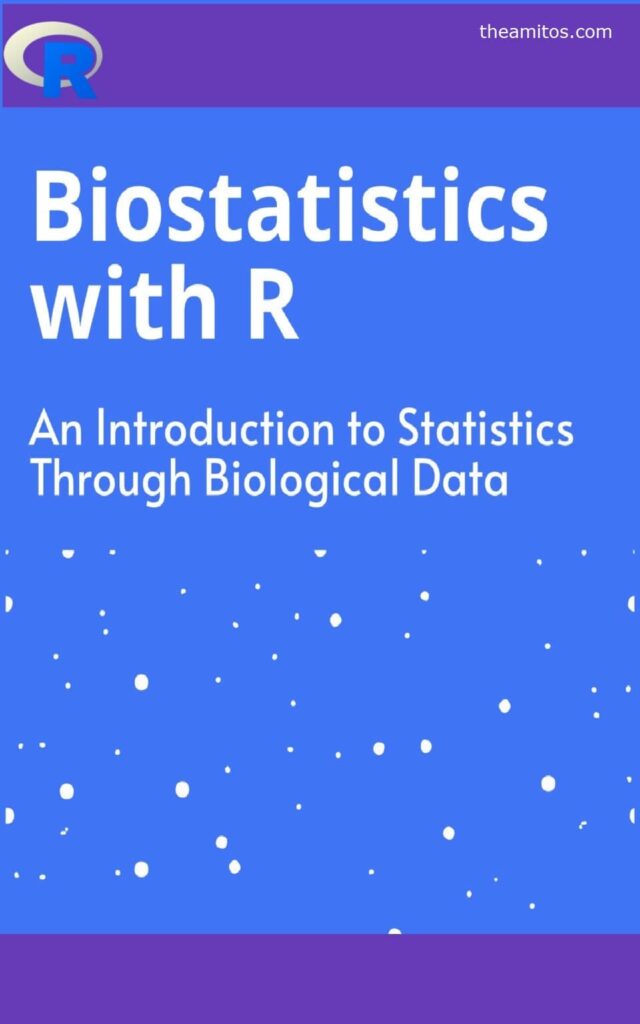In today’s data-centric world, biology has entered a new era, governed by field observations and complex data analysis. The growing intersection of biology, statistics, and data science has given rise to a powerful domain known as biostatistics.
This comprehensive guide serves as an in-depth introduction to biostatistics with R. It is tailored for students, researchers, healthcare professionals, and data scientists interested in accurately and efficiently analyzing biological datasets.
What is Biostatistics?
Biostatistics refers to the application of statistical principles and methods to biological, medical, and health-related research. It plays a pivotal role in the design of biological experiments, the collection and analysis of data, and the interpretation of results in a way that aids decision-making.
Key Applications:
- Clinical trials and epidemiological studies
- Genetic and genomic research
- Public health data analysis
- Agricultural and ecological data studies
- Pharmaceutical research and drug development
Descriptive Statistics in Biostatistics with R
Descriptive statistics provide the foundational understanding of biological data.
Key Concepts:
- Mean, Median, Mode: Central tendency indicators for variables like heart rate, cholesterol level, or gene expression.
- Standard Deviation & Variance: Measures of spread, vital in population-based studies.
- Percentiles & Quartiles: Useful for comparing distributions in case-control studies.
R functions like summary(), mean(), and sd() allow for quick insights into the dataset. When working with grouped biological data (e.g., comparing treatment vs. control groups), group_by() and summarize() from the dplyr package prove invaluable.
Inferential Statistics: Hypothesis Testing with R
Inferential statistics help in drawing conclusions from sample data. In biostatistics, this often involves determining the effect of a treatment or identifying associations between risk factors and diseases.
Common Statistical Tests in R:
- t-test: Used to compare means between two groups (e.g., drug vs. placebo)
- ANOVA: Compares means among multiple groups (e.g., different dosage levels)
- Chi-Square Test: Tests for independence between categorical variables
- Correlation Analysis: Measures the association between variables like BMI and blood pressure
Example:
t.test(group1$blood_pressure, group2$blood_pressure)
Regression Analysis in Biostatistics
Regression models are essential in biomedical research for predicting outcomes and assessing relationships.
Types of Regression Models:
- Linear Regression: Predicts continuous outcomes (e.g., blood glucose level)
- Logistic Regression: Used for binary outcomes (e.g., disease presence: yes/no)
- Poisson Regression: Ideal for count data (e.g., number of infections)
- Cox Proportional Hazards Model: Used in survival analysis (e.g., time to death post-treatment)
In R, lm() and glm() are foundational functions, while packages like survival and rms enhance modeling capabilities.
Biological Data Visualization with R
Effective visualization is critical in biostatistics, especially when presenting results to non-statisticians or publishing research papers.
Useful Visualization Tools in R:
- ggplot2: For advanced, layered plotting
- plotly: For interactive graphs
- pheatmap or ComplexHeatmap: For genomic data
- survminer: For survival curves
Example:
ggplot(data, aes(x = time, y = survival_rate)) +
geom_line() +
labs(title = "Survival Curve", x = "Time (days)", y = "Survival Rate")

Specialized R Packages for Biological Data Analysis
- Bioconductor
- Repository tailored for genomic data.
- Includes packages like edgeR, limma, and DESeq2 for RNA-Seq and microarray analysis.
- survival
- Widely used in clinical research.
- Implements Kaplan-Meier estimation and Cox regression.
- epiR
- Ideal for epidemiological analysis.
- Supports risk ratio, odds ratio, and prevalence estimation.
- ggbio
- Visualizes genomic features using ggplot2 grammar.
These packages elevate R as a one-stop solution for advanced biostatistical workflows.
Key Applications of Biostatistics with R
1. Clinical Trial Data Analysis
Biostatistics plays a central role in the design and analysis of clinical trials. R enables:
- Randomization and blinding techniques
- Sample size calculation
- Survival analysis
- Cox proportional hazards modeling
- Kaplan-Meier survival curves
2. Genomic Studies
Genomic data often involves thousands of variables (genes) and relatively few observations (samples), making statistical rigor essential. Biostatisticians use R and Bioconductor packages such as:
- edgeR for differential expression analysis
- limma for linear modeling of microarray data
- DESeq2 for RNA-Seq data analysis
These tools help scientists identify significant gene expression changes and biological pathways.
3. Public Health Research
Epidemiology is another area where biostatistics is vital. With R, epidemiologists can:
- Model disease transmission
- Conduct case-control and cohort studies
- Analyze risk factors and disease prevalence
Popular packages include epiR, epitools, and surveillance.
4. Survival Analysis in Biostatistics
Survival analysis is essential when studying time-to-event data such as time to death or disease recurrence. With R, biostatisticians can generate:
- Kaplan-Meier plots
- Log-rank test results
- Cox regression models
These methods help researchers interpret and compare survival probabilities across different populations.
5. Longitudinal Data Analysis
Longitudinal studies track the same subjects over time and are common in medical research. Biostatistics with R enables:
- Mixed-effects models
- Generalized estimating equations (GEE)
- Repeated measures ANOVA
Packages like nlme and lme4 provide comprehensive tools for analyzing repeated measures data.
Challenges and Best Practices in Biostatistics with R
Common Challenges:
- High-dimensional data in genomics
- Missing data in medical records
- Data heterogeneity in observational studies
Best Practices:
- Always check for data quality and consistency
- Normalize or transform skewed biological variables
- Validate models using cross-validation or bootstrapping
- Visualize residuals and diagnostic plots
Conclusion
Biostatistics with R is transforming the way researchers and practitioners interpret biological data. From clinical research and genomics to epidemiology and ecology, R offers a flexible, powerful, and reproducible platform for data analysis. Whether you’re a student exploring statistical concepts or a professional handling complex datasets, mastering biostatistics with R will empower your research and decision-making.